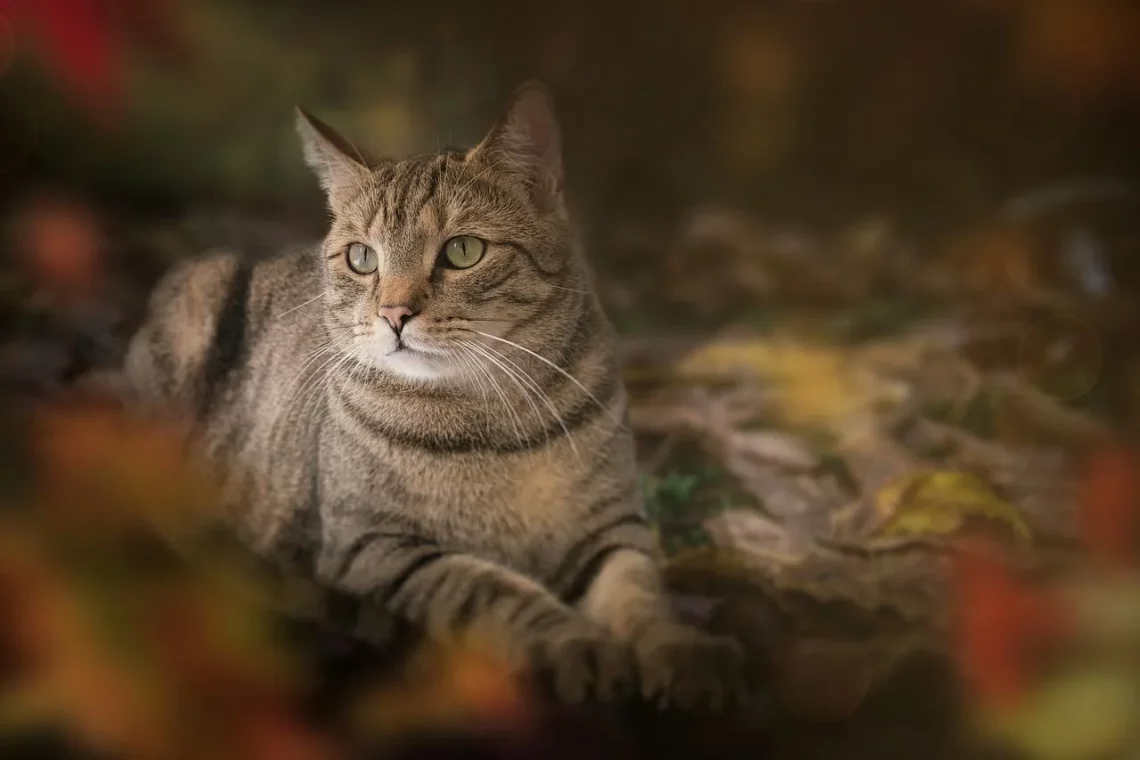
Understanding the Behavior of a Cat Licking Its Fur and More
Cats are fascinating creatures that have captivated humans for centuries. Their behaviors are often mysterious and can leave pet owners pondering the reasons behind their actions. One particularly intriguing behavior is the act of licking their fur, which serves various purposes beyond mere grooming. This instinctual habit is deeply rooted in a cat’s biology and serves to maintain their health and well-being. Understanding why cats engage in this behavior not only helps pet owners provide better care but also enhances the bond between humans and their feline companions.
The act of grooming is a multifaceted behavior that encompasses both physical and emotional aspects. It is not solely a means of keeping their coat clean; rather, it can reflect a range of emotions and conditions. From self-soothing mechanisms to social communication, licking is an essential part of a cat’s daily routine. Additionally, this behavior can be influenced by various factors, including environmental changes, stress, and health issues. Thus, observing and understanding your cat’s grooming habits can offer valuable insights into their overall well-being.
In this article, we will explore the various dimensions of a cat’s licking behavior, examining the reasons behind it and what it means for the health and happiness of our furry friends.
Physical Benefits of Grooming
Grooming is primarily associated with maintaining a cat’s physical appearance and hygiene. Cats are known for their fastidious grooming habits, which serve multiple purposes. Firstly, by licking their fur, cats remove dirt, debris, and loose hair, ensuring that their coat remains clean and healthy. This is crucial for preventing skin irritations and infections that may arise from unkempt fur.
Moreover, grooming helps distribute natural oils produced by the skin. These oils play a vital role in keeping the fur soft and waterproof. A well-groomed coat not only looks good but also acts as a protective barrier against environmental elements. In this way, grooming is essential for maintaining a cat’s overall health and comfort.
Additionally, grooming aids in temperature regulation. Cats do not sweat like humans; instead, they rely on their fur to insulate them from extreme temperatures. By licking and grooming, they can help cool themselves down in warmer months, allowing for better thermoregulation. This is particularly important for indoor cats, who may not have access to natural cooling methods.
Furthermore, grooming can serve as a form of exercise. The stretching and movement involved in licking can keep a cat agile and promote muscle tone. Regular grooming habits contribute to a cat’s overall physical well-being, making it an essential aspect of their daily routine.
In conclusion, the physical benefits of grooming extend far beyond mere aesthetics. It plays a critical role in skin health, temperature regulation, and even physical fitness. Observing your cat’s grooming habits can provide insights into their physical condition and overall health.
Emotional and Social Aspects of Grooming
While the physical benefits of grooming are well-documented, the emotional and social aspects of this behavior are equally important. For cats, grooming is often a self-soothing activity. When a cat feels anxious or stressed, they may engage in excessive licking as a way to calm themselves. This behavior can manifest during changes in their environment, such as moving to a new home or the introduction of a new pet.
Additionally, grooming can serve as a bonding activity among cats. Social grooming, or allogrooming, is common in multi-cat households. Cats will often groom each other as a sign of affection and trust. This behavior strengthens social bonds and establishes hierarchy within a group of cats. If you notice your cats grooming one another, it’s a positive indication of their relationship.
Moreover, grooming can also be a form of communication. Cats have scent glands located in their mouths and paws, which they activate when they groom. By licking each other or themselves, they are also spreading their scent, marking their territory, and expressing familiarity. This behavior reassures them of their safe environment and helps establish a sense of belonging.
In some cases, excessive grooming can indicate underlying emotional issues such as anxiety or depression. If a cat is compulsively licking or has developed bald patches, it may be necessary to consult with a veterinarian or animal behaviorist. Understanding the emotional and social aspects of grooming can help pet owners recognize when their cats might be struggling and need support.
In summary, grooming is not merely a physical necessity for cats but also serves crucial emotional and social functions. Recognizing the significance of this behavior can help cat owners foster a nurturing environment for their pets, ensuring both their physical and emotional well-being.
Understanding Excessive Grooming
Excessive grooming in cats can be a cause for concern, as it often indicates underlying issues that need to be addressed. While grooming is a normal behavior, when a cat begins to lick excessively to the point of causing injury or bald spots, it may signal stress, anxiety, or health problems.
One common cause of excessive grooming is stress. Cats are sensitive creatures that can easily become overwhelmed by changes in their environment. Factors such as moving to a new home, introducing new pets, or even changes in their human’s routine can lead to anxiety. In response, cats may turn to grooming as a coping mechanism. This behavior can create a vicious cycle, where stress leads to grooming, and the grooming itself causes more stress due to skin irritation.
Another potential cause of excessive grooming is medical issues. Conditions such as allergies, skin infections, or parasites can trigger increased grooming behaviors. For instance, if a cat is suffering from fleas, they may lick or bite at their skin in an attempt to alleviate the discomfort. It’s essential for cat owners to monitor their pets for signs of excessive grooming and consult a veterinarian if they notice any concerning changes.
Behavioral issues can also play a role in excessive grooming. Cats that are bored or not stimulated enough may engage in grooming as a way to occupy themselves. Providing enrichment through play, toys, and interactive activities can help reduce this behavior.
In some cases, excessive grooming may require a multifaceted approach to treatment. This can include behavioral modification techniques, environmental changes, or even medication in more severe cases. Working closely with a veterinarian or animal behaviorist can help identify the root cause of the issue and develop an appropriate plan for management.
In conclusion, while grooming is a natural behavior for cats, excessive grooming can indicate stress, health issues, or boredom. Understanding the signs and causes of excessive grooming can empower pet owners to take proactive steps in ensuring their cat’s well-being.
The Role of Environment in Grooming Behavior
The environment plays a significant role in shaping a cat’s grooming behavior. Various factors, including living conditions, available resources, and social dynamics, can influence how and when a cat grooms itself.
Cats are territorial animals, and their environment greatly impacts their sense of security. A stable and familiar environment allows cats to feel safe, which can lead to regular grooming behaviors. Conversely, a chaotic or stressful environment may trigger excessive grooming as a response to anxiety. For instance, loud noises, frequent visitors, or the presence of unfamiliar animals can create stress for a cat, leading them to engage in grooming as a coping mechanism.
Moreover, the availability of resources such as scratching posts, cozy hiding spots, and interactive toys can affect grooming behavior. Cats that have access to various forms of enrichment may exhibit more balanced grooming habits, as they are less likely to become bored or stressed. Providing vertical spaces, such as cat trees or shelves, can also contribute to a cat’s overall well-being and reduce anxiety-related grooming.
Social dynamics within a household can influence grooming behavior as well. In multi-cat homes, the presence of dominant or aggressive cats can create stress for others, leading to changes in grooming habits. On the other hand, positive social interactions, such as mutual grooming among cats, can foster a sense of security and promote healthy grooming behaviors.
In conclusion, the environment plays a crucial role in shaping a cat’s grooming behavior. By creating a stable, enriching, and secure environment, cat owners can help their pets maintain healthy grooming habits and overall well-being.
In summary, while grooming is a natural and essential behavior for cats, understanding the various factors that influence it can lead to a happier and healthier feline companion. Observing your cat’s grooming habits and recognizing any changes can help ensure they receive the care and support they need.
**Disclaimer:** This article is for informational purposes only and does not constitute medical advice. For any health-related concerns, please consult a qualified veterinarian.




